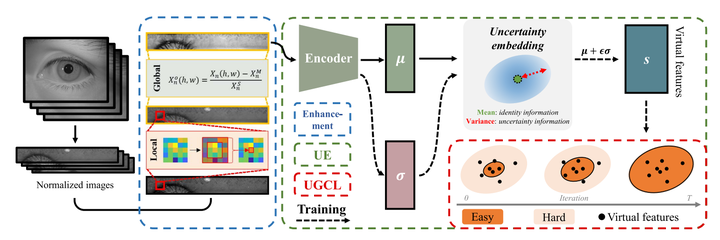Towards More Discriminative and Robust Iris Recognition by Learning Uncertain Factors

Abstract
The uncontrollable acquisition process limits the performance of iris recognition. In the acquisition process, various inevitable factors, including eyes, devices, and environment, hinder the iris recognition system from learning a discriminative identity representation. This leads to severe performance degradation. In this paper, we explore uncertain acquisition factors and propose uncertainty embedding (UE) and uncertainty-guided curriculum learning (UGCL) to mitigate the influence of acquisition factors. UE represents an iris image using a probabilistic distribution rather than a deterministic point (binary template or feature vector) that is widely adopted in iris recognition methods. Specifically, UE learns identity and uncertainty features from the input image, and encodes them as two independent components of the distribution, mean and variance. Based on this representation, an input image can be regarded as an instantiated feature sampled from the UE, and we can also generate various virtual features through sampling. UGCL is constructed by imitating the progressive learning process of newborns. Particularly, it selects virtual features to train the model in an easy-to-hard order at different training stages according to their uncertainty. In addition, an instance-level enhancement method is developed by utilizing local and global statistics to mitigate the data uncertainty from image noise and acquisition conditions in the pixel-level space. The experimental results on six benchmark iris datasets verify the effectiveness and generalization ability of the proposed method on same-sensor and cross-sensor recognition.